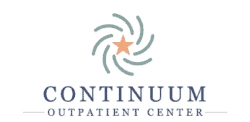Inpatient Rehab in Austin Locals Can Trust for Sustainable Recovery
Are you or your loved one looking for addiction recovery support? Ripple Ranch offers inpatient rehab Austin locals can rely on for long-lasting healing.
Written by our Ripple Ranch Recovery Center staff & reviewed by Dr. Jeffrey L. Butts and Crissy Clark, LCSW-S, EMDR – Executive Director
How Prevalent Is Drug Addiction in Austin, Texas?
In Travis County, substance use disorder (SUD) affects more than 82,000 adults aged 18 and above every year.1
In particular, deaths related to opioids have skyrocketed in Travis County. In 2021, there was an 89% increase compared to the previous year. In fact, opioids account for 75% of all overdose deaths in the county.2
Moreover, poor mental health was reported by more than 30% of Travis County residents in 2021. This showcases the need for co-occurring care as well. Various other elements also play a role in shaping the addiction landscape in Austin. Some of the most common among them include:3

Learn More About Ripple Ranch Recovery Center
Age Groups
Different age groups in Austin may be more susceptible to addiction due to various factors. Children and teenagers may be influenced by peer pressure, leading to substance use disorder and the need for inpatient rehab Austin treatment. Young adults may also be more likely to engage in risky behavior.
Middle-aged individuals may face stressors such as work pressure, which can contribute to addiction. Seniors may struggle with chronic pain management, leading to prescription drug abuse.
Socioeconomic Factors
Socioeconomic status plays a significant role in addiction rates in Austin. Individuals facing financial hardships and limited access to resources may be more vulnerable. Economic stress, unemployment, and lack of access to health care can contribute to the cycle of addiction.
Cultural Influences
Austin’s diverse population brings with it a variety of cultural influences that can impact addiction rates. Cultural norms, beliefs, and values play a significant role in shaping attitudes towards substance use.
For example, some cultures may have a higher acceptance of alcohol consumption. This leads to an increased risk of alcohol-related addiction. Cultural traditions may also include substance use as a part of celebrations, which can contribute to addiction patterns.
Mental Health
Mental health issues are closely linked to addiction in Austin. Individuals struggling with conditions like depression may turn to substances as a coping mechanism. Dual diagnosis cases, where individuals face both addiction and mental health challenges, are common.
Community and Peer Influence
The social groups individuals belong to can have a significant impact on their addiction risk. Supportive and healthy communities can deter addiction. In contrast, those with a high prevalence of substance abuse may unknowingly encourage it.
Key Takeaway
With the aforementioned statistics on SUD in Travis County, it is evident that reputable addiction support is necessary for community healing and support. At Ripple Ranch Recovery Center, we provide inpatient rehab Austin locals can rely on for sustainable wellness.
How Can Inpatient Rehab Austin Treatment Help Those Struggling With Addiction?
Inpatient rehab Austin programs, such as our Ripple Ranch Recovery Center residential program, are a valuable resource for individuals struggling with addiction. Here is why:
24/7 Support and Supervision
Inpatient rehab offers around-the-clock support and supervision. This ensures that individuals struggling with addiction have access to immediate help whenever they need it.
The presence of qualified staff creates a safe and comfortable environment. This minimizes the risk of relapse and ensures the individual’s well-being.
Detoxification and Medical Care
The detoxification process can be challenging, both physically and emotionally. Inpatient rehab Austin programs provide medical supervision during detox.
The aim is to manage withdrawal symptoms and ensure the individual’s safety. The medical team can also address any underlying medical issues contributing to addiction.
Individualized Treatment Plans
Each person struggling with addiction has unique needs and circumstances. Effective inpatient rehab Austin programs develop personalized treatment plans to address these specific factors. Therapists work closely with the individual to identify and address the root causes of addiction.
"Personalizing treatment plans in an inpatient setting involves a thorough assessment of each patient's unique needs, incorporating factors such as the substance of abuse, co-occurring mental health conditions, and individual goals for recovery. Our interdisciplinary team collaborates to develop comprehensive plans that may include a combination of psychotherapy, medication management, and holistic interventions tailored to the individual. Regular reassessment allows for adjustments to the treatment plan based on the patient's progress and evolving needs. This personalized approach ensures that each patient receives the most effective and individualized care during their inpatient drug rehab stay."
Crissy Clark Tweet
Skill-building and Education
Inpatient rehab Austin programs offer various educational opportunities to promote relapse prevention.
These may include workshops on:
- Stress management
- Coping mechanisms
- Life skills development
This way, inpatient rehab empowers individuals to overcome challenges and make healthier choices.
Aftercare Planning and Support
Recovery is an ongoing journey. That is why inpatient rehab Austin programs understand the importance of long-term support. Through aftercare planning, individuals receive guidance and resources to sustain their recovery.
This may include:
- Weekly alumni meetings
- Community events
- Connections to support groups
- Outpatient therapy
How Does Inpatient Rehab Austin Treatment Compare to Other Treatment Programs?
Inpatient rehab Austin programs differ greatly from other treatment programs. Here is how:
Structured Environment
Inpatient rehab offers a highly structured and controlled environment. In it, individuals reside at the facility for the duration of their treatment. This enables constant monitoring and a supportive community where individuals can focus on their recovery.
In contrast, partial hospitalization programs (PHP) and intensive outpatient programs (IOP) provide more flexibility. They allow individuals to live at home and attend treatment during specific hours of the day.
Intensity of Treatment
Inpatient rehab Austin programs typically offer the most intensive level of treatment. The comprehensive nature of the program allows for a wide range of therapeutic modalities.
On the other hand, PHP and IOP programs offer less intensive treatment with fewer therapy hours.
Length of Stay
Inpatient rehab programs generally have longer treatment durations than PHP and IOP programs. The length of stay in inpatient rehab can range from a few weeks to several months. However, this depends on the individual’s needs and progress.
PHP and IOP programs typically have shorter durations. They usually range from a few weeks to a few months.
"The average length of stay in our inpatient drug rehab varies based on individual needs, severity of substance use disorder, and progress in treatment. Typically, stays range from 28 to 90 days, with the understanding that some individuals may require more extended care for comprehensive recovery. The determination of the length of stay is made collaboratively, considering the initial assessment, ongoing progress evaluations, and the achievement of treatment goals. This individualized approach ensures that each patient receives the necessary duration of inpatient care for a successful and sustained recovery."
Crissy Clark Tweet
Level of Independence
In inpatient rehab Austin treatment, individuals are in a regulated environment that minimizes distractions. As a result, individuals solely focus on their recovery.
Contrary to this, in PHP and IOP programs, individuals have more freedom while undergoing treatment. They are able to live at home and engage in daily activities, such as work or school.
Limited External Risks
One of the advantages of inpatient rehab is the removal of external risks. By living away from the pressures and temptations of everyday life, individuals recover faster. This isolation from outside influences allows for heightened self-reflection, learning, and personal growth.
Who Can Benefit Most From Inpatient Rehab Austin Programs?
Inpatient treatment is a critical level of care for individuals struggling with addiction and mental health challenges. Here are some key factors to consider when choosing inpatient rehab:
Co-Occurring Disorders
Individuals struggling with co-occurring mental health disorders benefit greatly from inpatient treatment. This program offers dual diagnosis treatment.
Examples of these co-occurring conditions include:
- Depression
- Anxiety
- Bipolar disorder
- Post-traumatic stress disorder
Lack of a Supportive Home Environment
Those who lack a supportive home environment can achieve success from inpatient treatment. This rehab provides an environment for recovery without negativity.
High Risk of Relapse
Individuals with a high risk of relapse can benefit from the controlled environment of inpatient treatment. Continuous supervision and intensive therapies help individuals develop strong relapse-prevention strategies.
Limited Self-Control and Discipline
For individuals who struggle with self-control and discipline, inpatient treatment can be highly beneficial. The structured nature of inpatient programs instills discipline, accountability, and routines. A successful recovery depends on these factors.
History of Failed Outpatient Treatment
If outpatient treatment has not resulted in the desired outcomes, inpatient treatment may be the next step.
Inpatient programs offer a higher level of care. This reduces the individual’s exposure to stressors and provides constant assistance. In this way, inpatient rehab Austin programs break the cycle of addiction that outpatient treatment alone cannot.
Desire for a Fresh Start
Some individuals prefer to start their recovery journey in a completely new environment. Inpatient rehab provides an opportunity for a fresh start in a supportive setting.
Overview of Inpatient Treatment at Ripple Ranch
Inpatient rehab Austin at Ripple Ranch provides a comprehensive recovery program. Some of the most important aspects of this treatment include:
Individual Therapy
In individual therapy sessions, patients work one-on-one with a trained therapist. The aim is to explore their personal challenges and develop strategies for coping and healing.
Through these sessions, patients can:
- Gain a deeper understanding of the underlying causes of their addiction
- Learn effective coping mechanisms
Our therapists provide a safe environment, encouraging open and honest communication.
"Balancing structured treatment with individual freedom in an inpatient setting is crucial for fostering autonomy and personal responsibility. We design individualized treatment plans that incorporate therapeutic activities while allowing space for personal reflection and growth. Structured group therapies and educational sessions provide a framework, while scheduled recreational activities and free time allow individuals to make choices and develop decision-making skills. This balance aims to create an environment that supports recovery while empowering individuals to take ownership of their journey toward sobriety."
Crissy Clark Tweet
Group Therapy
Group therapy sessions enable individuals to connect with others who are facing similar challenges. This therapy promotes empathy, as individuals see that they are not alone.
Led by a skilled facilitator, these sessions allow patients to:
- Share their experiences
- Learn from others
- Build a support network
Skills Training
At Ripple Ranch, skills training is an integral part of the treatment program. Patients are taught essential skills that can help them navigate everyday life in a healthy manner.
These skills may include:
- Effective communication
- Stress management
- Problem-solving
- Time management
- Goal-setting
These skills enable individuals to maintain their recovery beyond their stay at the facility.
Yoga
Yoga is incorporated into the treatment program to promote physical and mental well-being. Guided by experienced instructors, patients participate in gentle yoga sessions that focus on:
- Deep breathing
- Gentle stretching
- Increased body awareness
Yoga helps individuals relax, reduce anxiety, improve flexibility, and promote mindfulness. All of these factors contribute to healing.
Exercise
Physical exercise plays a crucial role in the recovery process. Ripple Ranch offers various exercise options tailored to individual needs and abilities.
Regular exercise has numerous benefits, including:
- Stress reduction
- Improved mood
- Increased energy levels
- Enhanced overall physical well-being
How Far Is Ripple Ranch From Austin, Texas?
Ripple Ranch is approximately 70 miles from Austin, Texas. This means that individuals from Austin can reach the facility in around an hour’s drive.
Our 20+ acre Hill Country estate is perfectly situated between the vibrant cities of Austin and San Antonio. This prime location allows individuals to access the facility easily, making it an ideal choice.
What Therapies Are Utilized in Ripple Ranch’s Inpatient Rehab Austin?
Ripple Ranch’s inpatient rehab Austin treatment utilizes a variety of evidence-based therapies. Some of the most common among them include:
Dialectical Behavior Therapy (DBT)
DBT combines cognitive-behavioral therapy with mindfulness. It aims to help those struggling with intense feelings and self-destructive actions. This therapy is particularly helpful for people with borderline personality disorder.
Eye Movement Desensitization and Reprocessing (EMDR)
EMDR is a treatment for PTSD and other trauma-related disorders. It uses eye movements and bilateral stimuli to help process the bad memories.
EMDR aims to:
- Desensitize individuals to traumatic memories
- Reframe negative beliefs
- Promote emotional healing
Rational Emotive Behavior Therapy (REBT)
REBT helps individuals find and change unhelpful thoughts and beliefs. It teaches people that how they think affects how they feel and act. It’s good for issues like depression, anxiety, and addiction.
Motivational Interviewing (MI)
MI is an approachable way to help individuals change their behavior. It respects their autonomy and works on any doubts they have about changing. The aim of this therapy is to empower individuals to make meaningful and lasting changes in their lives.

How Does Ripple Ranch Set Individuals Up for Long-Term Sobriety?
When it comes to long-term sobriety, Ripple Ranch has a comprehensive approach. Here is what makes us stand out:
Individualized Plans
Ripple Ranch recognizes that everyone’s journey to sobriety is unique. We create individualized plans tailored to each person’s specific needs and mental health challenges. This personalized approach ensures that individuals receive the care that best suits them.
"Our inpatient drug rehab program distinguishes itself through its immersive and structured environment, providing 24/7 care and monitoring. This intensive setting allows for a more comprehensive focus on addressing the physical, psychological, and social aspects of addiction. Inpatient care is particularly beneficial for individuals with severe substance use disorders or those requiring a controlled and supportive environment for detoxification. The program's residential nature ensures constant availability of therapeutic support, minimizing external influences that may hinder recovery and optimizing the intensity of treatment interventions."
Dr. Butts Tweet
Tolerance & Acceptance
Ripple Ranch emphasizes the importance of tolerance and acceptance in recovery. This extends to accepting one’s past, understanding that recovery is a journey, and embracing the differences in others. Tolerance and acceptance help individuals focus on their own growth and healing.
Navigating Emotions
Recovery often involves dealing with complex emotions. Ripple Ranch equips individuals with tools to navigate their feelings, including strategies for managing stress and anger constructively. This emotional intelligence is a crucial aspect of maintaining long-term sobriety.
Inner Peace
Inner peace is a central goal of recovery at Ripple Ranch. This involves finding a sense of calm and serenity amidst life’s challenges. Techniques such as mindfulness and holistic activities contribute to this state of inner peace.
Mindfulness
Mindfulness plays a key role in recovery at Ripple Ranch. This practice helps individuals become more aware of their thoughts and feelings without judgment. Mindfulness techniques foster self-awareness, which is valuable for maintaining sobriety in the long term.
Take the First Step Toward a Sober Future
If you or a loved one is seeking lasting recovery from addiction, don’t hesitate. Contact Ripple Ranch today and start your journey toward long-term sobriety with our inpatient rehab Austin treatment. Your brighter future begins here.
Resources
- 1 https://www.integralcare.org/wp-content/uploads/2017/09/150901_sud_report_6.pdf
- 2https://www.traviscountytx.gov/topics/opioids/learn-the-dangers
- 3https://data.austintexas.gov/stories/s/HE-A-2-Percentage-of-people-who-report-5-or-more-p/mxzy-r35z/
- 4https://www.apa.org/ptsd-guideline/patients-and-families/cognitive-behavioral





